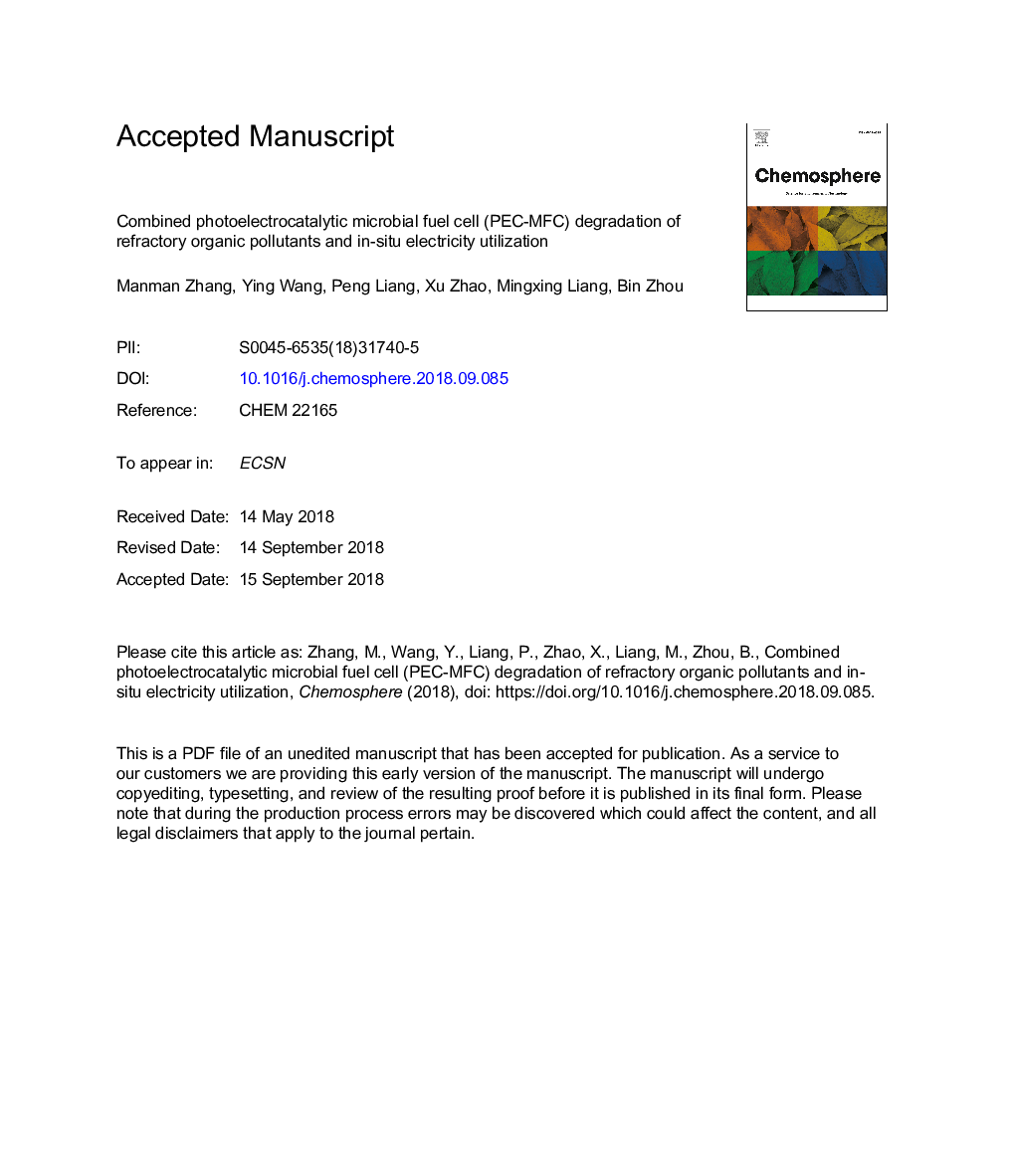| کد مقاله | کد نشریه | سال انتشار | مقاله انگلیسی | نسخه تمام متن |
|---|---|---|---|---|
| 11025192 | 1701028 | 2019 | 38 صفحه PDF | دانلود رایگان |
عنوان انگلیسی مقاله ISI
Combined photoelectrocatalytic microbial fuel cell (PEC-MFC) degradation of refractory organic pollutants and in-situ electricity utilization
دانلود مقاله + سفارش ترجمه
دانلود مقاله ISI انگلیسی
رایگان برای ایرانیان
کلمات کلیدی
موضوعات مرتبط
علوم زیستی و بیوفناوری
علوم محیط زیست
شیمی زیست محیطی
پیش نمایش صفحه اول مقاله

چکیده انگلیسی
A new photoelectrocatalytic (PEC) and microbial fuel cell (MFC) process was developed and applied to simultaneously remove refractory organic pollutants (i.e., phenol and aniline) from wastewater while recovering energy for in-situ utilization. The current generated by the MFC process was applied to drive the PEC reaction. Compared with single PEC or MFC processes, the PEC-MFC combined process showed higher pollutant and chemical oxygen demand (COD) removal capacities and electricity production. Over 95% of the phenol or aniline was removed by these process, even at high initial concentrations. The COD removal efficiencies for phenol and aniline were ca. 96% (from 700 to 29â¯mgâ¯Lâ1) and 70% (from 165 to 49â¯mgâ¯Lâ1), respectively. Although the PEC process showed a limited contribution to phenol and aniline removals (16.5% and 43%, respectively), the utilization of PEC-treated phenol or aniline streams resulted in a MFC with higher voltage output, higher coulombic efficiency, maximal volumetric power density, and lower internal resistance as compared to untreated water. High-performance liquid chromatography coupled with mass spectrometry measurements revealed quinones/hydroquinones and low molecular weight organic acids to be produced as intermediates after the PEC process, which could improve the production of electricity in the MFC.
ناشر
Database: Elsevier - ScienceDirect (ساینس دایرکت)
Journal: Chemosphere - Volume 214, January 2019, Pages 669-678
Journal: Chemosphere - Volume 214, January 2019, Pages 669-678
نویسندگان
Manman Zhang, Ying Wang, Peng Liang, Xu Zhao, Mingxing Liang, Bin Zhou,